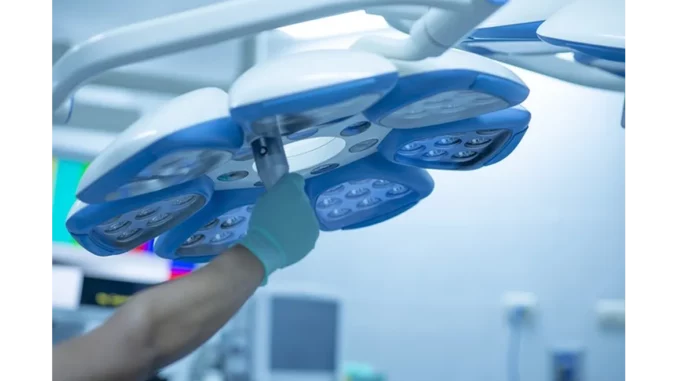
In recent years, the healthcare industry has experienced remarkable technological advancements, particularly in the domain of surgical instrument tracking systems. These systems are rapidly becoming indispensable in modern healthcare facilities, spurred by the necessity for enhanced efficiency, safety, and compliance with stringent regulatory requirements. The market for surgical instrument tracking systems is on the cusp of substantial growth. Projections suggest an increase from USD 172.2 million in 2023 to USD 447.69 million by 2030, reflecting a compound annual growth rate of 11.2%. This anticipated expansion is underpinned by factors such as technological innovation, supportive regulatory environments, and the rising demand for improved inventory and asset management within healthcare settings.
Central to the growth of the surgical instrument tracking systems market is the relentless pace of technological advancement. The integration of Radio Frequency Identification (RFID) and barcode systems into tracking solutions has revolutionised how surgical instruments are managed within healthcare facilities. RFID technology, in particular, offers distinct advantages over traditional barcode systems, including the capability to read multiple tags simultaneously and without line of sight, thereby significantly enhancing inventory management efficiency. Additionally, RFID tags are capable of storing extensive data and are more resilient to damage during sterilisation, rendering them ideal for surgical instrument tracking.
Further enriching the capabilities of these tracking systems are recent developments in artificial intelligence and machine learning. Censis Technologies’ “CensisAI2 Instrument Recovery” system, for instance, employs AI to automate numerous tracking operations, such as sterilisation and inventory management, which in turn reduces costs and boosts surgical efficiency. Similarly, the collaboration between Google Cloud and Johnson & Johnson MedTech has yielded the Semi-Automated Vision Inspection (SAVI) system, leveraging machine learning to automate the identification and organisation of surgical instruments, thereby enhancing patient safety and reducing surgery delays.
The adoption of surgical instrument tracking systems is significantly influenced by regulatory mandates, particularly the FDA’s Unique Device Identification (UDI) requirements. These regulations necessitate that medical device manufacturers uniquely identify and track their products throughout the entire lifecycle, ensuring traceability from production to patient use. Such requirements have spurred demand for tracking systems capable of compliance, especially in the United States, where the FDA’s UDI system is well-established. Adhering to UDI regulations not only satisfies regulatory obligations but also bolsters patient safety by mitigating the risk of employing incorrect or unsterilised instruments during surgical procedures. Beyond the FDA, other global regulatory bodies are instituting similar standards, further stimulating demand. The European Union’s Medical Device Regulation (MDR), which incorporates UDI adoption provisions, is expected to drive market growth in Europe.
The surgical instrument tracking system market is characterised by diverse segmentation based on technology, components, end-users, and regions. RFID and barcode technologies are the primary tracking methods, with RFID anticipated to experience accelerated growth due to its advanced functionalities. In terms of components, the market includes hardware, software, and services, with hardware currently dominating due to the prevalent use of RFID chips and barcode tags. End-users primarily comprise hospitals and other healthcare facilities, with hospitals representing the largest segment due to their substantial patient influx and requisite for efficient inventory management. Geographically, North America leads the market, largely owing to its advanced healthcare infrastructure and rigorous regulatory standards. Conversely, the Asia-Pacific region is projected to exhibit the quickest growth, driven by increased healthcare investments and the swift adoption of advanced technologies in nations such as China and India.
Despite the promising growth outlook, the surgical instrument tracking system market encounters several challenges. The high cost of implementing these systems, particularly RFID technology, can pose a hurdle for smaller healthcare facilities. Moreover, integrating tracking systems with existing hospital infrastructure entails substantial investments in both time and resources. Nevertheless, the future of the surgical instrument tracking system market appears auspicious. Continuous technological advancements and heightened regulatory support are expected to drive increased adoption. As healthcare facilities globally strive to enhance patient safety and operational efficiency, the demand for robust tracking systems is set to expand, presenting significant opportunities for market players to innovate and diversify their offerings.
The surgical instrument tracking system market is undergoing a transformative phase, propelled by technological innovations and regulatory imperatives. As healthcare facilities continue to prioritise patient safety and efficiency, the adoption of advanced tracking systems is poised to rise. This trend paves the way for a more streamlined and secure healthcare environment, underscoring the critical role of these systems in the future landscape of healthcare.


Be the first to comment